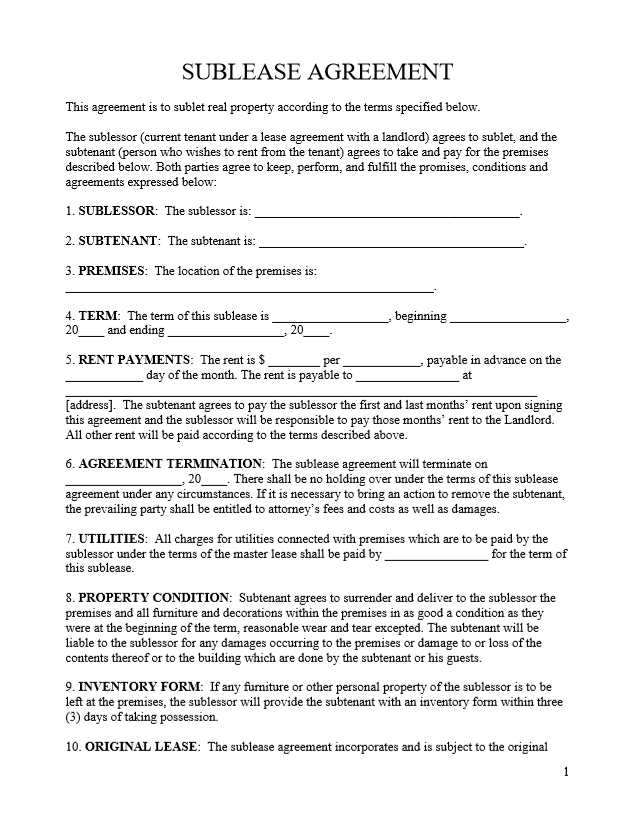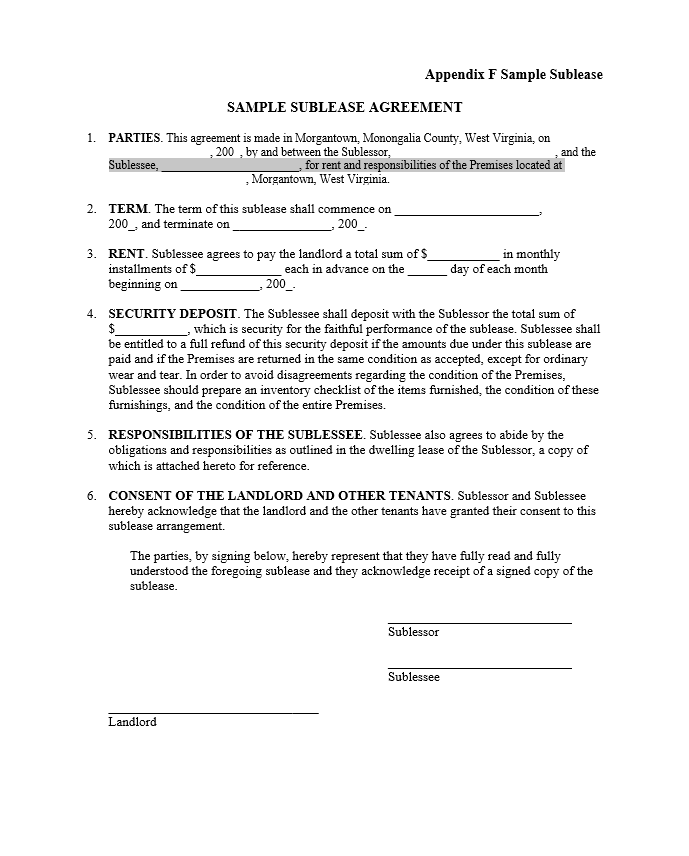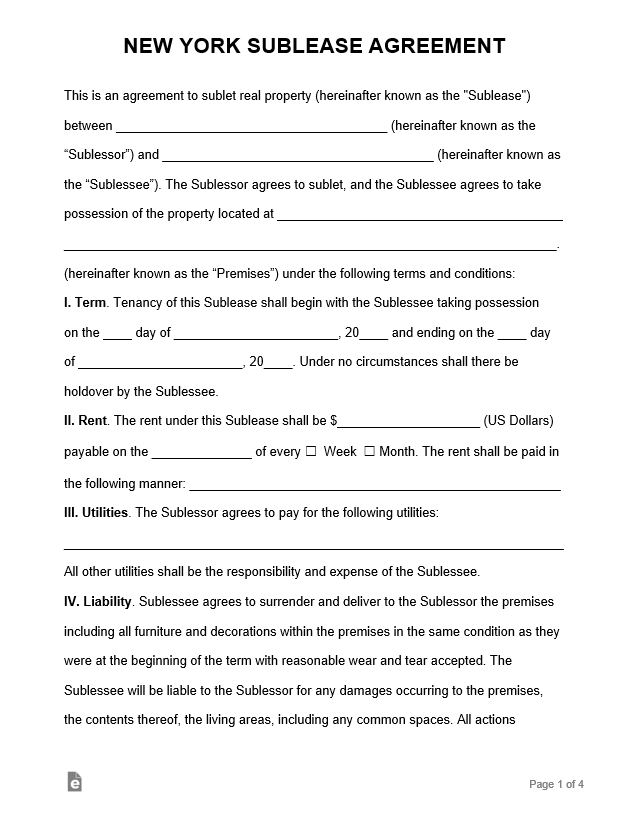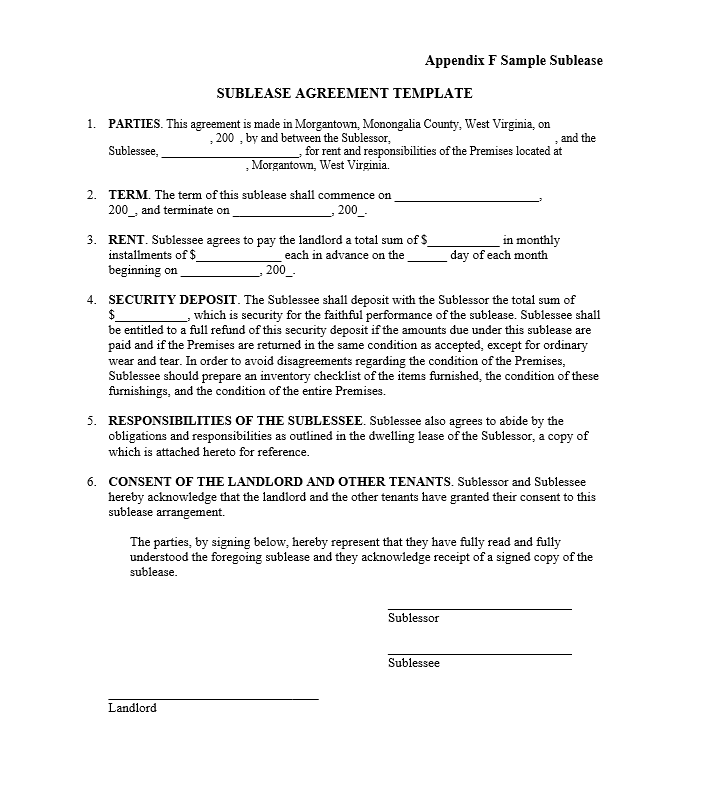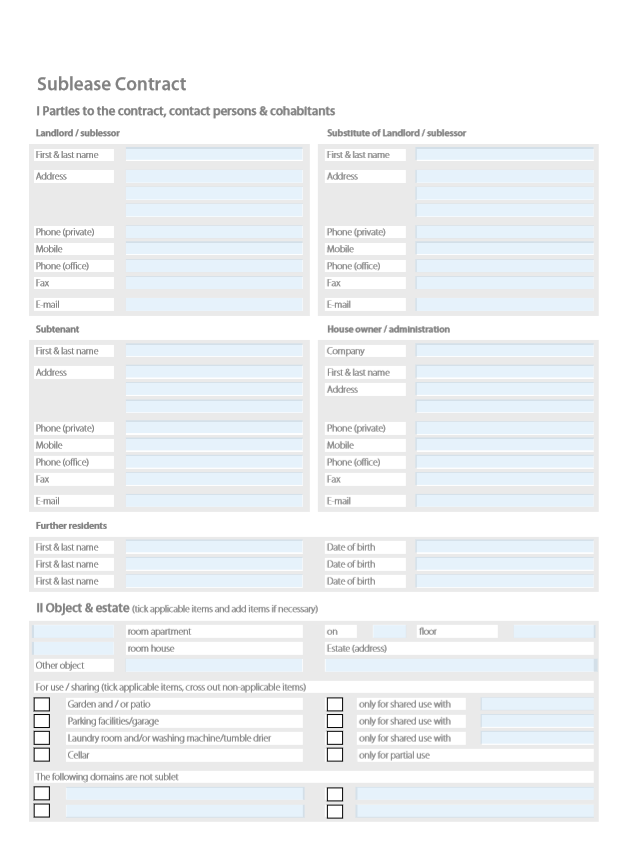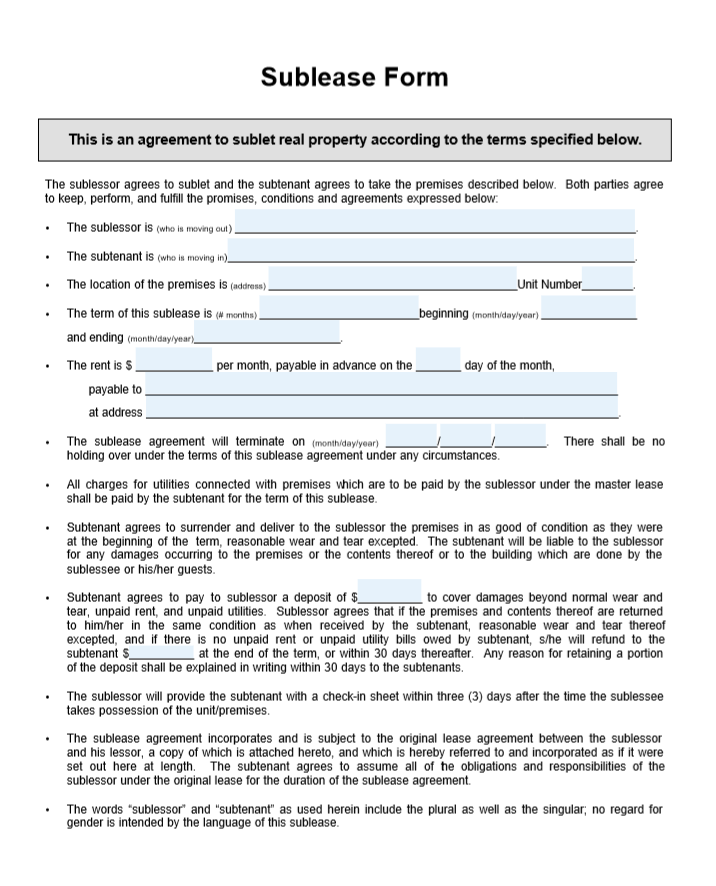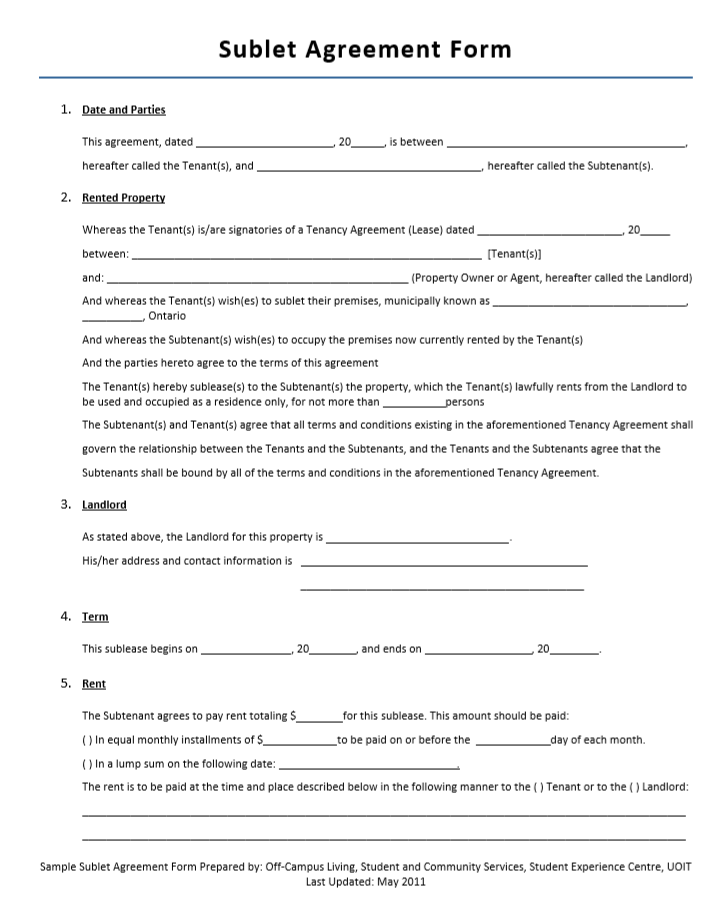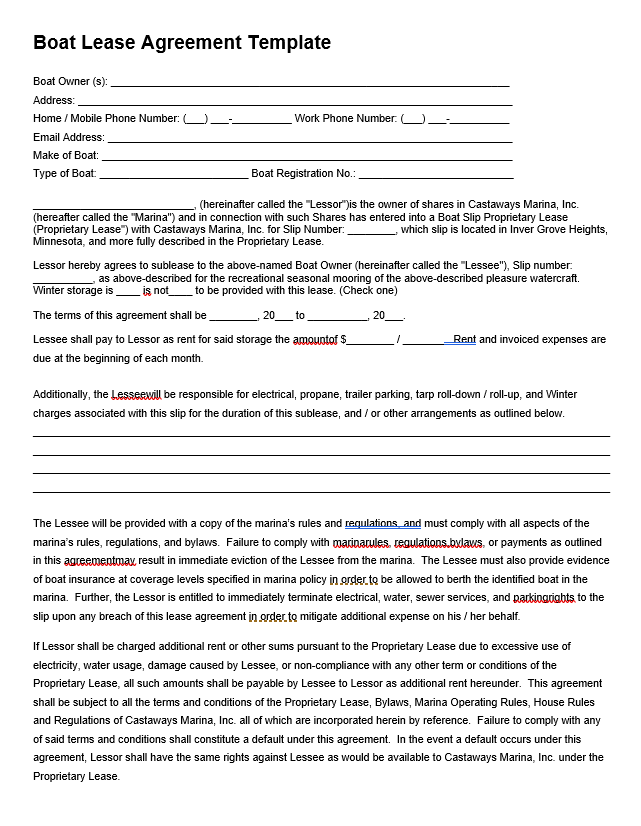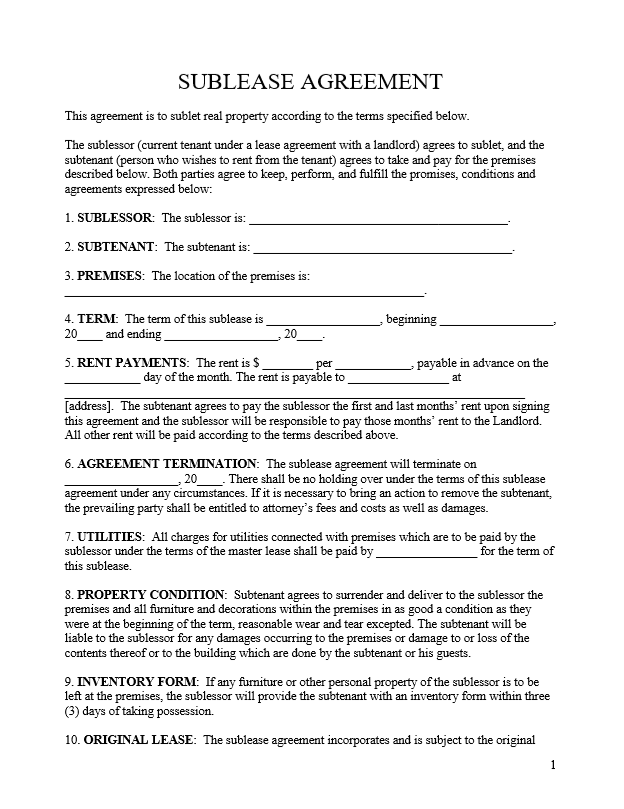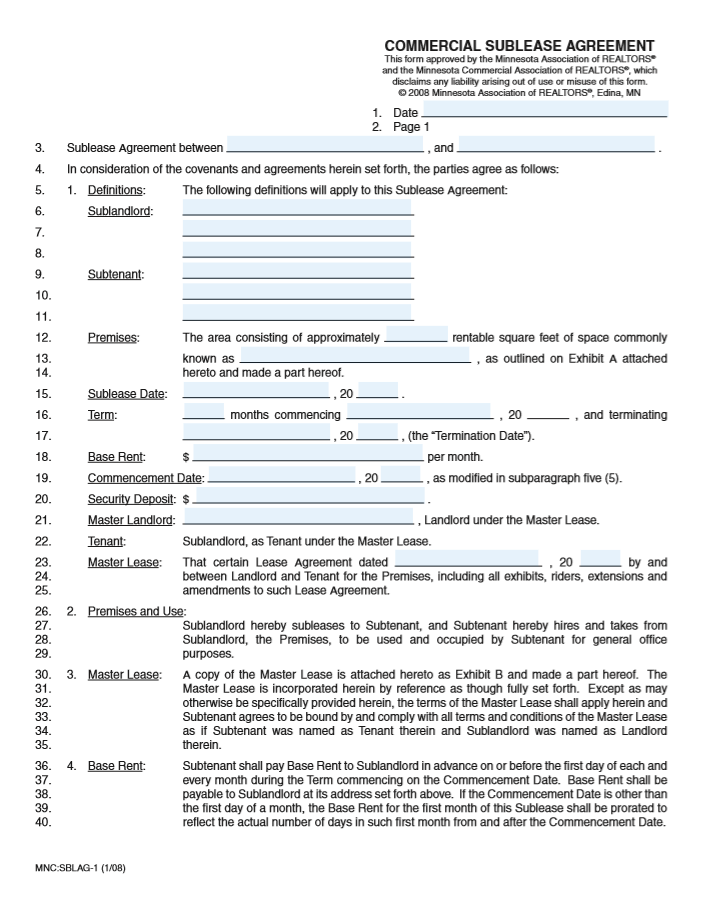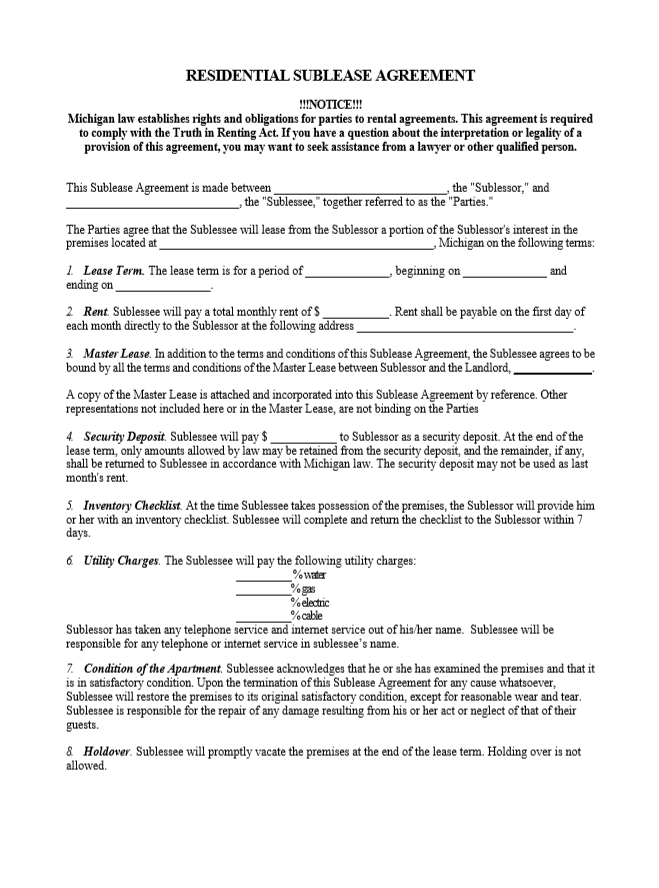Make Extra Money with Sublease Agreement – Did you know that you can make extra money during your vacation or holiday? You may wonder how possible that is. Well, the simple answer is by subleasing your house or apartment. When you spend your time away from your house, your house obviously will be left empty. That is why subleasing your house by making a sublease agreement is a good idea. The subtenant will take care of your house while you are away and also will give you extra money during your trip. However, you need to know several things about the agreement.
What is the Sublease Agreement?
In general, a sublease agreement is a real estate property contract or agreement between the original tenant and a new tenant. The most common reason people subleasing their apartment is that they cannot meet the terms and conditions of the remaining lease for a period of time. To put it simply, say you have rent an apartment in a city but at the same time you receive a job offer in another city. This means you cannot live in your apartment you have rent.
Benefits of Subleasing Your Apartment or House
Subleasing your apartment or house can offer several benefits, especially if you are away for an extended period. Here are some of the key advantages:
- Financial Benefits: One of the primary benefits of subleasing is the financial aspect. If you are not living in your apartment or house for a while, subleasing allows you to recoup some or all of your rent or mortgage payments. It can be particularly beneficial if you take a long vacation or relocate temporarily for work.
- Property Maintenance: Your property will be looked after when you are away. The subtenant will live in the property, reducing the risk of it being left vacant and vulnerable to break-ins or damage. They can also take care of basic maintenance tasks, like watering plants, collecting mail, and keeping the place clean.
- Flexibility: Subleasing offers flexibility. If you need to move out before your lease is up, subleasing can allow you to do so without breaking your lease agreement. It can save you from paying penalties or losing your security deposit.
- Legal Protection: A sublease agreement provides legal protection for both parties. It outlines the responsibilities of the subtenant and ensures that the original tenant’s rights are protected.
- Ease of Transition: A sublease can provide a smoother transition if you plan to move out permanently. The subtenant can take over the lease when you are ready to move, saving you the trouble of finding a new tenant.
Remember, while subleasing can offer these benefits, it is important to do it correctly and legally to protect your interests. Always check with your landlord or property manager before subleasing your property.
Several Things Before Subleasing
Before you decide to sublease your apartment or house, there are several important factors to consider:
- Landlord’s Permission: Check your lease agreement to see if subleasing is allowed or if it requires the landlord’s approval. This step is crucial to avoid legal issues.
- Reliable Subtenant: Find a trustworthy subtenant who respects your property and pays rent on time. Consider conducting a background check or asking for references.
- Sublease Agreement: Draft a clear it outlining the terms, including rent payment, sublease period, and duties for utilities and maintenance.
- Rent Amount: Determine the price for the sublease regarding market needs and your original lease terms.
- Property Condition: Document the current state of your property details before the sublease starts to avoid being held liable for any damage driven by the subtenant.
- Legal Implications: Understand the legal implications of subleasing. Consult a legal professional to understand your rights and responsibilities.
Remember, subleasing can be beneficial if done correctly. Consider these factors to ensure a successful subleasing experience
Steps to Create a Sublease Agreement
It is a critical step in the subleasing process. Here are the steps to create a comprehensive:
- Check Your Original Lease: Before creating, check your actual lease to see if subleasing is authorized and under what conditions. Some leases may need the landlord’s written permission before you can sublease.
- Obtain Landlord’s Permission: If your lease needs it, obtain written permission from your landlord to sublease your property. This step assures you are not violating your actual agreement.
- Find a Subtenant: Once you have your permission, the next stage is to see a suitable subtenant. Consider checking or asking for references to assure they are reliable.
- Drafting: Start by drafting the sublease agreement. Include key details like parties involved, property address, sublease term, rent amount, and duties for utilities and maintenance.
- Specific Terms: Include specific terms or conditions, such as pet policies or repair responsibilities.
- Review: Carefully check the agreement to ensure all necessary details are included and the terms are fair and legal. Consider having a lawyer review the agreement for added security.
- Sign the Agreement: After all, parties have reviewed and agreed to the terms, the agreement should be signed. Each party should keep a copy of the signed agreement for their records.
Ensuring it has been done correctly to protect your rights and interests is essential.
Sublease agreement apartment
Hence, sublease agreement apartment will help you compensate an amount of money you just paid for your rent. In addition, the other reason is a commercial reason. You need some extra money during your trip or vacation. Having paid the rent without living in your apartment is odd, isn’t it?
Sublease Agreement
Sublease contract
Sublease form
Sublet agreement form
Boat lease agreements template
Commercial sublease
Residential sublease agreements
Examples of Sublease Agreements
Example sublease agreements can vary depending on the specific circumstances of the sublease. However, they generally contain similar elements. Here are some examples of what a sublease agreement might look like:
- Residential Sublease Agreement: This is a common sublease agreement used when a tenant wants to sublease their apartment or house to another person. It typically includes details about the property, the term of the sublease, the amount of rent, and the responsibilities of the subtenant.
- Commercial Sublease Agreement: This agreement is used when a business wants to sublease part or all of its commercial space to another business. It often includes additional details about the use of the space, any modifications that can be made, and the responsibilities of the subtenant regarding maintenance and repairs.
- Room Rental Sublease Agreement: This type of agreement is used when a tenant wants to sublease a room in their apartment or house to another person. It typically includes details about the shared use of common areas and the responsibilities of the subtenant.
- Short-Term Sublease Agreement: This agreement is used for short-term subleases, such as vacation rentals. It often includes specific details about check-in and check-out times, cleaning fees, and rules about pets or smoking.
- Long-Term Sublease Agreement: This type of agreement is used for long-term subleases, such as a tenant subleasing their apartment for a year while they are away. It typically includes more detailed terms about the responsibilities of the subtenant and the conditions under which the sublease can be terminated.
These are just examples. Your sublease agreement should be customized to fit your specific situation and needs. It is always a good idea to consult a legal professional when drafting a sublease agreement to ensure it is legally sound and protects your interests.
Common Mistakes to Avoid When Subleasing
Subleasing can be beneficial, but it is important to avoid common pitfalls. Here are some mistakes to avoid when subleasing:
- Not Checking Your Lease: One of the tenants’ biggest mistakes is not checking their original lease agreement to see if subleasing is allowed. Always review your lease and get written permission from your landlord before proceeding with a sublease.
- Not Screening Subtenants: It is crucial to screen potential subtenants thoroughly. It includes conducting a background check, checking references, and meeting them in person. Failing to do so could result in a subtenant who does not pay rent on time or damages the property.
- Not Having a Written Agreement: A verbal agreement is insufficient for subleasing. Always have a written sample sublease agreement that outlines the terms and conditions of the sublease. It protects both parties and can help prevent disputes.
- Not Documenting the Property Condition: Document the property’s condition before the subtenant moves in. Take photos and make a list of any existing damage. It can help protect you from being held responsible for damage caused by the subtenant.
- Not Setting Clear Expectations: Be clear about your expectations. It includes rules about pets, guests, noise, and the use of common areas. Clear communication can help prevent misunderstandings and conflicts.
- Not Planning for Early Termination: Things must sometimes work out as planned. The subtenant may need to move out early, or you may need to return home sooner than expected. Include a clause in your sublease agreement that addresses early termination to protect both parties.
Subleasing involves legal and financial responsibilities. Approaching it with care and due diligence is important to ensure a successful and beneficial arrangement.
What Happens if a Subtenant Violates the Terms of the Sublease Agreement?
Suppose a subtenant violates the terms of the sublease agreement. In that case, the original tenant (now acting as the landlord) may have the right to take action, including terminating the sublease or evicting the subtenant. However, the specific actions that can be taken often depend on local laws and the terms of the original lease and sublease agreement. It is always recommended to consult with a legal professional in these situations.
What Happens if the Original Tenant Wants to Return Before the Sublease Term is Up?
The terms for this situation should be outlined in the sublease agreement. In many cases, the original tenant must give the subtenant a certain amount of notice. Suppose the original tenant wishes to return, and the sublease agreement does not address this situation. In that case, discussing the situation with the subtenant and potentially consulting with a legal professional to understand the best course of action is recommended.
Can a Sublease Agreement Be Terminated Early?
Typically, early termination clauses require a certain amount of notice to be given by the party seeking to terminate the agreement. For example, the subtenant might be required to give the original tenant 30 days’ notice if they wish to leave early.
In some cases, an early termination clause also includes conditions for a penalty or forfeiture of the security deposit if the sublease is ended early. It protects the original tenant from financial loss due to the sublease ending sooner than expected.
However, it is important to note that the enforceability of early termination penalties can depend on local laws and regulations. In some jurisdictions, certain types of penalties may not be enforceable.
Suppose a subtenant needs to terminate their sublease early, and no provision for early termination was included in the sublease agreement. In that case, it is a good idea for them to discuss the situation with the original tenant. They may be able to agree, such as finding a new subtenant to take over the sublease.
Consulting with a legal professional when drafting or terminating a sublease agreement is recommended to ensure that all actions comply with local laws and regulations.
Can a Subtenant Sublease the Property to Someone Else?
Whether a subtenant can further sublease the property to someone else typically depends on the terms of the original lease and the sublease agreement. In many cases, this would require the permission of the original tenant and possibly the landlord. It is important to note that if sub-subleasing is allowed, the original tenant remains responsible for the property according to the terms of the original lease.

The content creator team at calipsotree.com is dedicated to making topics accessible to everyone, with over 9 years of experience in writing and breaking down complex concepts into easy-to-understand articles that answer readers’ financial questions.






